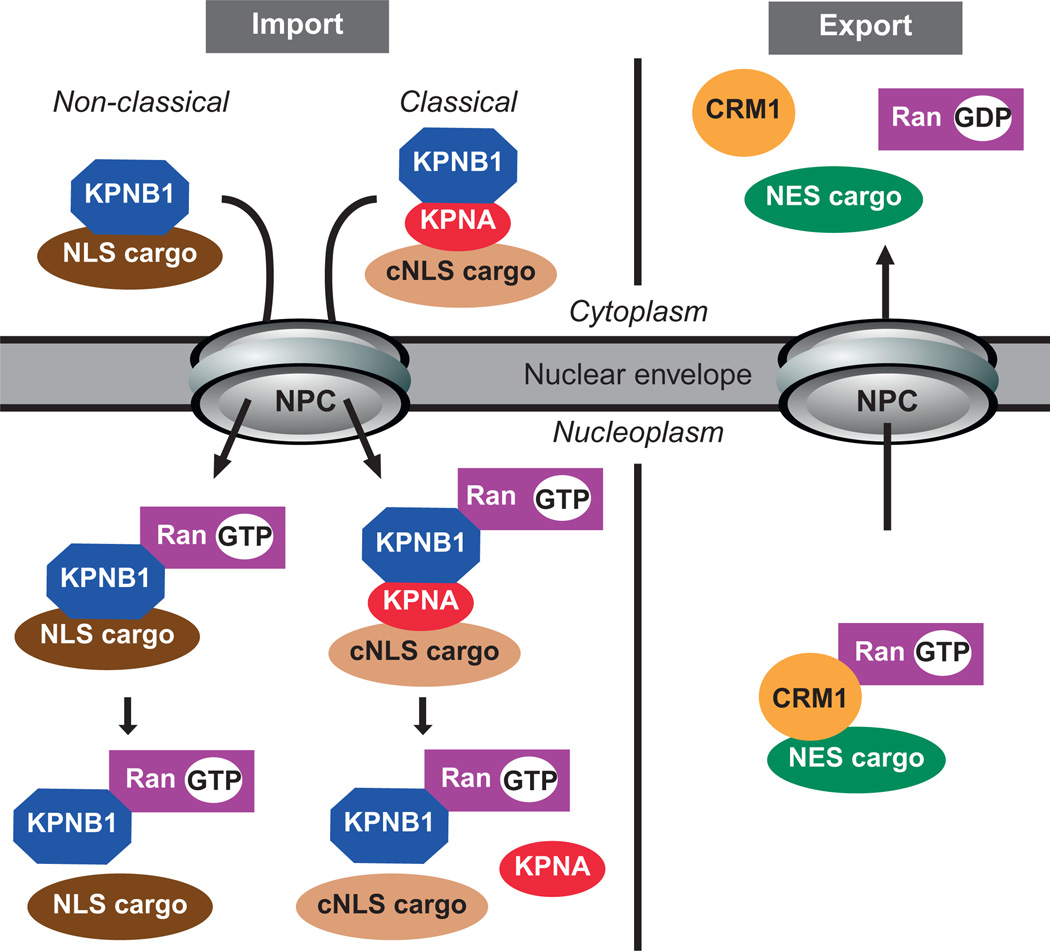Figure 10.2.
Basic model of karyopherin-mediated nuclear import and export pathways. The nuclear import pathway involves the import receptors karyopherin alpha (KPNA) and/or KPNB1 which can recognize proteins containing a classical (cNLS) or nonclassical (NLS) nuclear localization signal, respectively. The nuclear import of a cNLS-containing cargo involves both KPNA and KPNB1 import receptors, since KPNA recognizes the cNLS motif in the cargo protein and then KPNB1 mediates translocation of the import complex through the NPC by interacting with FG-Nups within the NPC. Once in the nucleus, Ran-GTP binding to KPNB1 results in the dissociation of the import complex and cargo release into the nucleus. The nuclear export pathway consists of an obligate trimeric complex consisting of the exportin (CRM1 for classical NES-containing cargo), export cargo, and Ran-GTP. Translocation of the complex through the NPC is mediated by interaction between the exportin and FG-Nups. Once in the cytoplasm, the hydrolysis of Ran-GTP to Ran-GDP results in the dissociation of the export complex and subsequent cargo release.

